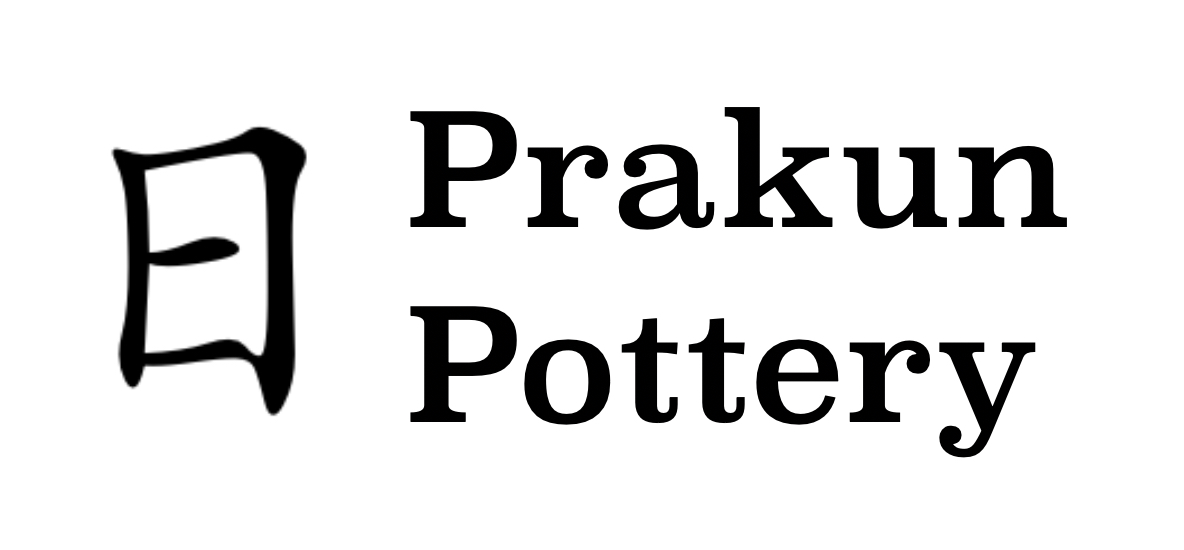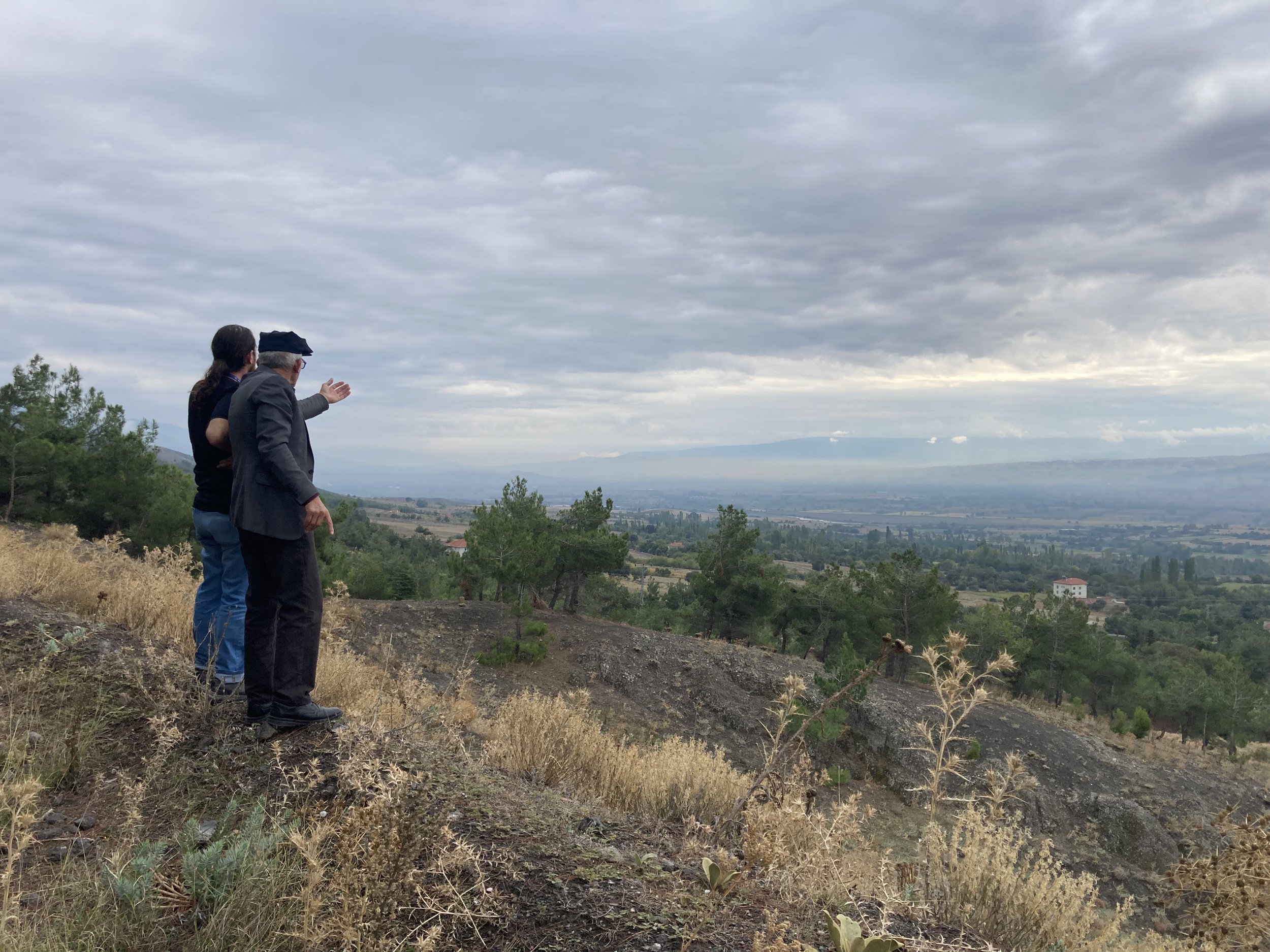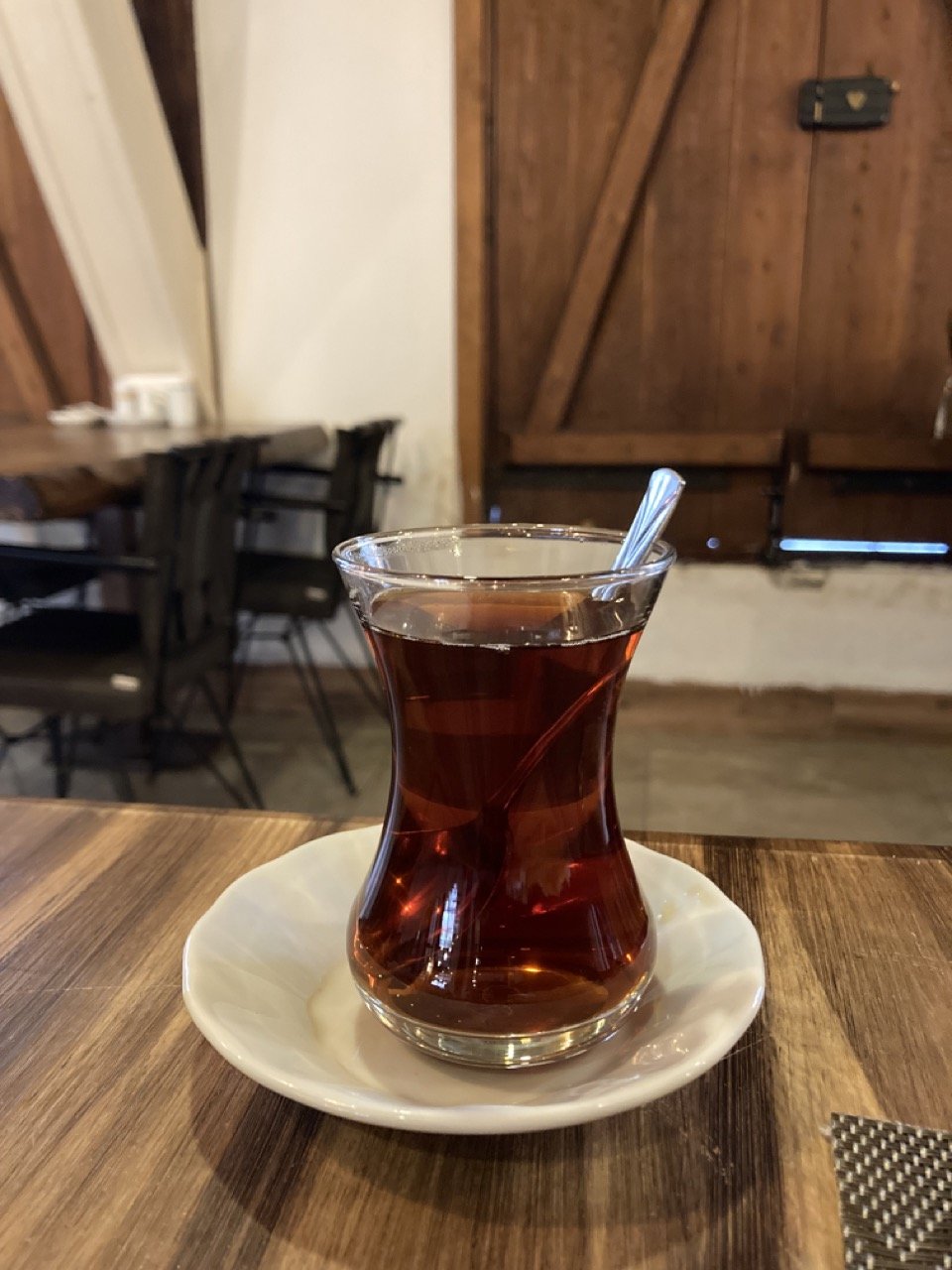To a Place Long Loved
15 October 2022
For me (Leah), the heart of this trip was going to Uluköy. It would have been enough to see the land around the place that was once Macrina’s home. But I’d heard that local memory could still identify a Church Place, the likely site of the martyr shrine in which Macrina and her parents were buried.
Our guide Çansu drove the short main street and idled in front of a teahouse, asking about the mayor’s office. An old man in a beret and suitcoat told Çansu that the office was closed—with its shrinking population, Uluköy has been demoted from town to village—but he could show us the Church Place. His name was Jafar. He got in next to Becca and directed us up to a Muslim mausoleum overlooking the little town. An animated conversation ensued, and Çansu reported that this was the place the other man in the teahouse thought we were looking for. Jafar thought otherwise, but he brought us here just in case.
Jafar explaining the confluence of the two rivers—by their ancient names, the Iris and Lycus
We got in the car again, Çansu navigating around gullies deep enough to gut the undercarriage. Jafar directed us east of town. We stopped by a newly-turned field that sloped up from the road. He led us up to the crest and down across another field, this one of wheat stubble with grains still scattered on the rocky ground. Then another field of thistles and dead grass. As an adolescent he’d been a shepherd, he told Çansu, and that’s how he knew the Church Place. The land has since been ruined by looters.
He brought us to a lone terebinth tree, older than he could remember. It was near the top of a long rise whose southwestern edge was marked out in trees. This was the Church Place. The site of the martyrs’ shrine, Macrina’s grave, Annisa.
I’ve imagined the estate to the southwest of the martyr shrine. If the shrine is located on this rise of ground, Annisa’s buildings and fields would occupy the flatter land still farmed below.





